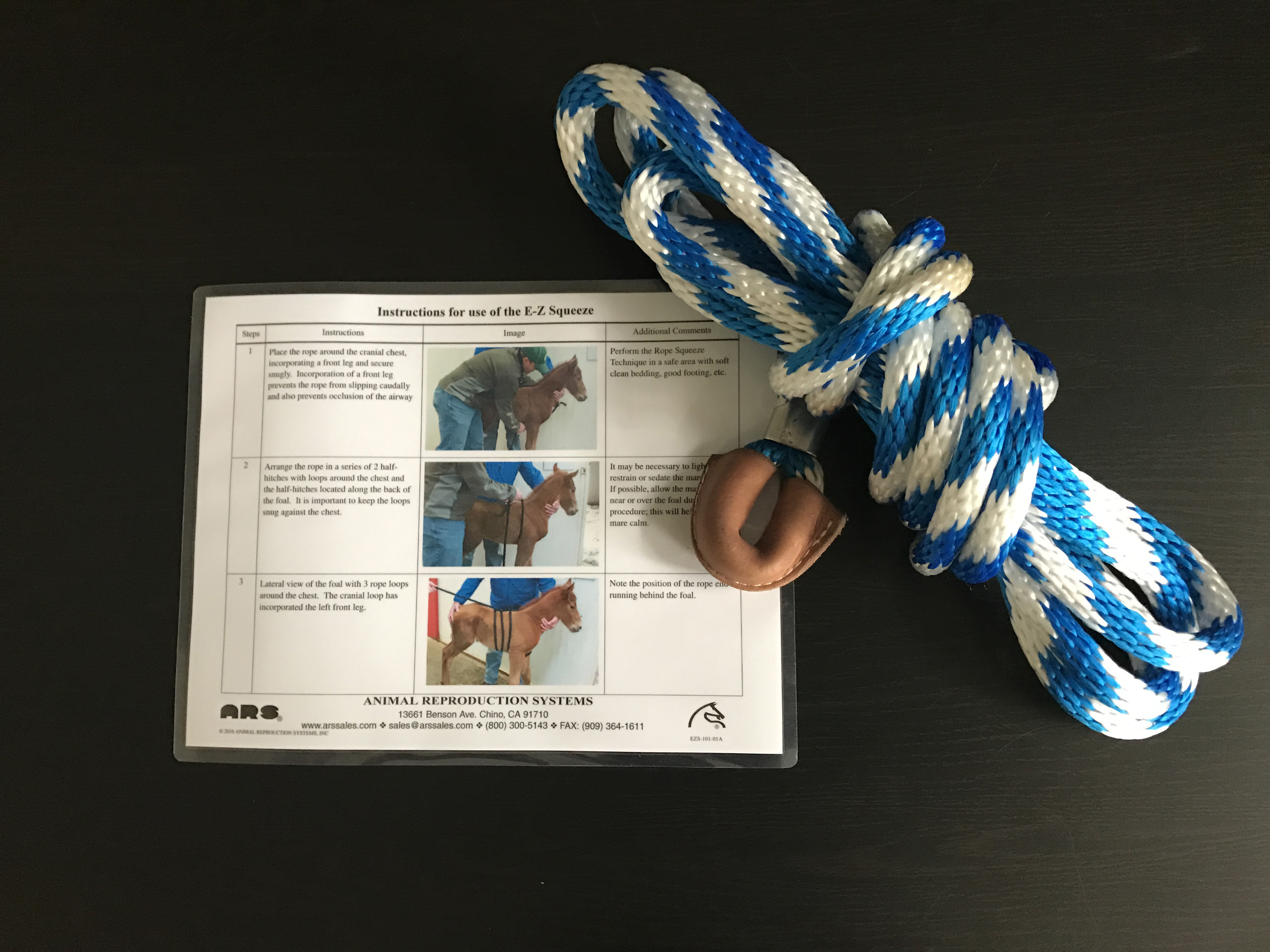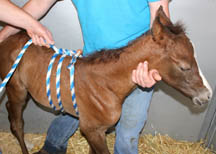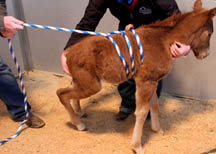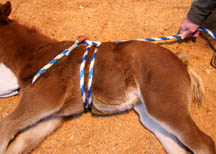| * |
Neurosteroids (i.e. pregnanes) function to keep an equine fetus quiescent in utero |
| * |
Pressure applied to the chest of the foal during passage through the birth canal is hypothesized to be the physical trigger that switches the physiological state of consciousness from that of somnolence or sedation in a fetus to that of awake, alert and interactive in the neonate |
| * |
In the normal foal, neurosteroid levels decline rapidly following birth |
| * |
However, in some foals, neurosteroid levels remain elevated for days and affected foals exhibit decreased awareness of their environment, decreased affinity for the mare, decreased interest or ability to nurse and are generally in an obtunded or stuporous mental state |
| * |
Application of continuous moderate pressure for 20 minutes to the chest of foals showing signs of neonatal maladjustment syndrome (NMS) may stimulate a transition to consciousness |
| |
* The Rope Squeeze Technique was developed by Dr. John Madigan at UC-Davis |
| * |
Foals become recumbent and may enter a slow wave sleep phase during the squeeze procedure |
| * |
It is recommended that all personnel remain quiet during the 20-minute squeeze period |
| * |
A 20-minute squeeze is designed to approximate the duration of normal Stage II of labor |
| * |
In some cases, the Foal Squeeze Technique may have to be applied more than one time |
| * |
Contraindications for application of the Foal Squeeze Technique include: |
| |
* Foals with rib fractures |
| |
* Septic foals |
| |
* Premature foals |
| |
* Foals with respiratory distress |
| * |
Additional information or demonstration/examples of foals with neonatal maladjustment syndrome or the Madigan Foal Squeeze Technique can be found online at:
www.equineneonatalmanual.com (Madigan, 2013).
https://www.youtube.com/watch?v=uZ9KpOSN6iU.
Madigan. Proceedings Amer Assoc Equine Pract 2014;60:101-131.
Aleman et al. Equine Veterinary Journal 2013;45:661-665.
Diesch and Mellor. Equine Veterinary Journal 2013;45:656-660. |



